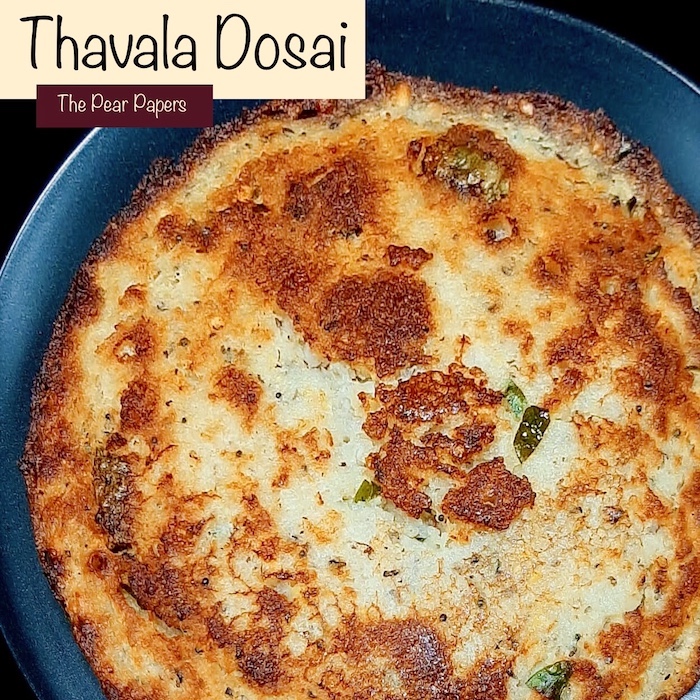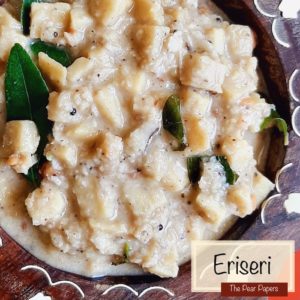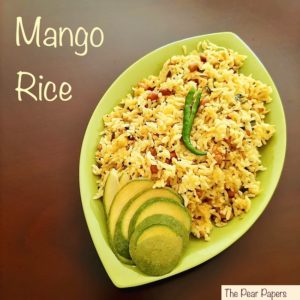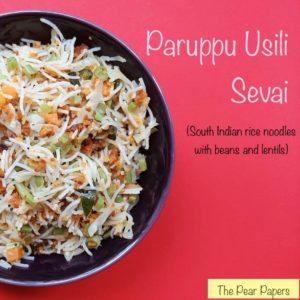
Thavala Dosai
Thavala Dosai is a very traditional South Indian tiffin item, made with rice and a combination of dhals, and is suitable for brunch or early evening snack. You can call it a ‘far cousin’ and somewhat a pan fried version of Thavala Vadai.
Traditionally, this dish was made in a big heavy bottomed vessel called ‘Thavalai’. With joint-family system in place, those days there were more than a dozen members in each family living under the same roof. The entire batter for making this dish will be divided into 4 or 5 portions. The thavalai will be kept on an earthen stove heated with burning charcoal and wood scraps. One or two large ladles of oil will be poured inside the thavalai and each portion of the batter will be poured in the oil and the pan closed. On minimum heat each dosai will take at least 30 mins to cook and become crisp, allowing the person cooking this to attend to other household chores in the meantime. Each dosai was cut into smaller portions and was enough to feed at least 2 or 3 people. As the families have shrunk in size nowadays, we make this in smaller size to suit our requirements.
Compared to many dishes we generally make, this dish needs slightly more oil and I recommend to use enough oil to enjoy the real taste of Thavala Dosai. Crispy outside and spongy soft inside is the highlight of Thavala Dosai.
Ingredients
Raw (uncooked) rice – 2 cups
Toor dhal – 1/3 cup
Chana dhal – 1/3 cup + 1 tbsp
Urad dhal – 1/3 cup + 1 tbsp
Sour yoghurt ~ 1 1/2 cup
Salt – 1 1/2 tsp (or to taste)
Coconut oil – as required
Mustard seeds – 1 tsp
Asafoetida – 1 tsp
Green chillies – 3 (or to taste)
Ginger – 3 cm piece
Curry leaves – a handful
Fresh coconut (grated) – 1 1/4 cup
Water – as required
Yield
~ 12 – 14 pieces
Prep time
45 mins – soaking/resting rice and dhal
10 mins – grinding
4 hours – soaking the batter
Cook time
1 hr
Method
1) Take rice, 1/3 cup toor dhal, 1/3 cup chana dhal and 1/3 cup urad dhal together in a bowl. Wash twice. Drain all the water from the the rice and dhal mixture. Now add just 2 tbsp of water to this mixture, cover the bowl and set aside for 45 mins. Mix once every 15 mins for it to absorb moisture evenly, swell up a bit and soften.
2) In the meantime, finely chop chillies, ginger and curry leaves. Set aside.
3) After 45 mins of soaking/resting, take the rice-dhal mixture and grind coarsely. Add the sour yogurt bit by bit when grinding. After you have a coarsely ground mixture, add the remaining yoghurt (if any yoghurt is left) and salt. Mix everything once. This is the basic thavala dosai batter. Set aside for 4 hrs.
4) After 4 hrs, heat up a medium sized tempering pan. Add 2 tbsp coconut oil, when the oil gets heated up, add mustard seeds and let it splutter. Then add 1 tbsp chana dhal and 1 tbsp urad dhal. Fry until the dhal turns golden. Quickly add the asafoetida, mix once, and add chopped chillies, ginger and curry leaves. Fry all this for a minute.
5) Now add the grated coconut to the tempering, mix and transfer the whole thing to the thavala dosai batter. Add enough water to adjust the consistency of the batter. The batter should be in pouring consistency (refer video in the next step and see note 6).
6) Heat up a heavy bottomed kadai. Add 2 tsp coconut oil and use a spoon to gently spread the oil to the sides of the kadai to form a coating. When the oil is heated up a bit, using a rounded ladle, pour 2 ladle-fulls of batter into the oil. Cover the batter with a lid and allow it to cook on minimum heat for 3 to 4 mins.
Grandma’s tip:
You don’t have to stand at the stove for ages, waiting for your dosai to cook. Once you’ve placed the lid, you can attend to other things until you hear the sizzling of the condensation (inside the lid) as it falls back onto the pan. Once you hear this, the dosai should be cooked at the bottom and ready to flip.
7) After 3-4 mins, remove the lid. The bottom of the thavala dosai will have a crispy, golden crust. Gently flip the dosai, add a tsp of oil and allow it to cook for couple of mins (no need to cover the dosai now), until the second side also becomes nice and crisp.
8) When the second side turns crisp, remove the thavala dosai from kadai and serve along with your favourite chutney or dosai milagaai podi. Thavala dosai is delicious even without any accompaniment!
Eating tip:
Remove all the crisp edges from the dosai, keep it aside in your plate and enjoy the middle portion first. Enjoy the crispy edges at the end!
Notes
- Sour yoghurt softens the thavalai dosai and also adds mild sourness to the dish, which compliments the sweetness from the fresh coconut and spicy taste from chillies and ginger. If you don’t have sour yoghurt, leave fresh yoghurt at room temperature for 1 day and use it the next day to make thavala dosai.
- It is very important to grind the batter coarsely for this recipe. This ensures a ‘crisp on the outside and soft on the inside’ texture to thavala dosai. So use pulse grinding and keep checking the batter in between to make sure it doesn’t become smooth. Refer Thavala vadai recipe to see what this coarsely ground mixture looks like.
- Use only fresh grated coconut for this recipe. Desiccated coconut or coconut powder is not an option. I have never tried to use coconut cream or coconut milk but you can experiment with these, keeping in mind the consistency of the batter.
- I’ve used coconut oil for this recipe. Alternatively, any cooking oil is good. Cast iron kadai is the best for making thavala dosai but you can use any other rounded heavy-bottomed pan.
- Test for batter consistency – as you pour the batter, it should spread out on its own in the pan without a need to spread it.
- Patience is key for crisp thavala dosais. Make them in low heat to get a golden exterior and fully cooked interior.


You May Also Like

Eriseri
March 20, 2022
Mango Rice
September 29, 2021